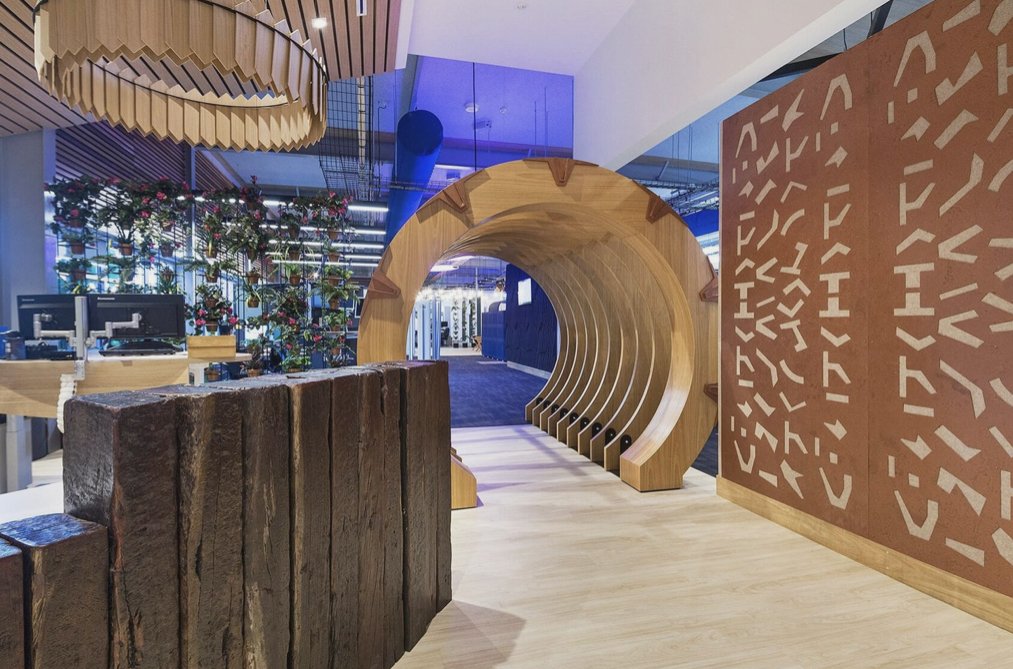What does the ideal workplace look like?
I am asked at least once a day what the ideal workplace looks like.
Is it a private office? Something that looks like our homes? A Disney-like playground full of zones for everything from rollerblading to meditation depending on how the mood takes us? My answer inevitably disappoints the parts of us that want to find a one-size-fits-all, efficient, scalable solution. Sadly, there isn’t one.
I’m trying to write this at an indoor skate park during the school holidays. My nervous system is being assaulted by a continuous stream of missed manoeuvres catapulting skateboard decks into ramps with a loud smack. Music blares over the speakers and yet is still unable to drown out the screams of the excited kids next to me, scoffing back slushies and chocolate bars.
Sitting outside doesn’t help. I’m huddled under a patio on an unforgivingly hard bench. It’s cold, and raining to boot. And, looking at my phone, I see it’s only 18 minutes into my son’s two hour session. Why didn’t I bring my noise cancelling headphones I wonder.
My son on the other hand couldn’t be happier. The noise that is unbearable to me, is to him a vibe. He’s creating new tricks, learning new skills, hanging out with his friends. The social observation learning and group contagion is elevating his practise, and helping him advance far faster than he ever would alone.
And this, is exactly the point as to why there is no one size fits all in workplace design. And it’s also why we need to talk much more about creating workplaces to suit different types of work, and different types of people. Not that this is a new idea. It’s just harder and more expensive to implement than rolling out 500 hot desks in a vast floor plate plastered with monochromatic shades of grey or beige.
Individual differences in everything from our personalities, to our work habits, to our actual jobs, mean that we should throw away the idea that we can make everyone happy in one type of space. This recent Wall Street Journal article highlights my research and that of others on the burning question of what elements of office design matter.
The truth is, given the right culture, leadership, and critically, a workspace designed for the humans who work there, there are any range of options that can work. The comments on the WSJ piece highlight this perfectly. One commenter has a range of reasons on why he never wants to work in an office again. Another hates working from home in her too small New York apartment, where her husband also works from home on the other side of a thin wall, with the TV blaring in the background all day.
Research tells us that most people want to spend some of their working week in the office. Instead of shouting at them and each other on how we can either make them or cajole them to come in, we should spend more time thinking about whether our workplaces are actually somewhere people want to be.
Next week I’m giving a keynote on rethinking work, and a three-hour workshop on how to implement a successful change to workspace design at the annual meeting of the Australian Psychological Society’s Industrial and Organizational Psychologists conference.
I’ll be talking about an organisation who successfully designed an open-plan office that employees love. How is this possible you ask? Well, for one thing, this organisation allowed their employees to be deeply involved in the design process right from the original concept. They took time to understand their individual needs and their different jobs. And they spent a great deal of money on well integrated acoustic design.
Charles Darwin University 📷 Glenn Campbell
There is a Stargate. Yes, like in the movie. There are rooms specifically designed with low levels of light. Outdoor work areas. Armchairs. All requested by the team. The architects were shocked and readily admitted these are all things they would never have suggested, and perhaps more tellingly, never thought would work. But they do. And five years on, it still works, and the employees love it.
Genuine employee consultation in workplace design, organisational change or culture change is sadly rare. The thing I hear most often in organisations is “I don’t feel valued” and “I don’t feel heard”. Companies wondering why their employees are making a beeline for the door might start by asking them how they feel on these two points.
A great workplace where the culture, leadership, vision and the space itself are all aligned is a joy to be in. This can never happen when employees have no voice. When we design workspaces with the latest fads and trends that no-one who works there actually wants. And it certainly won’t happen when we ignore the importance and value of individual differences.


